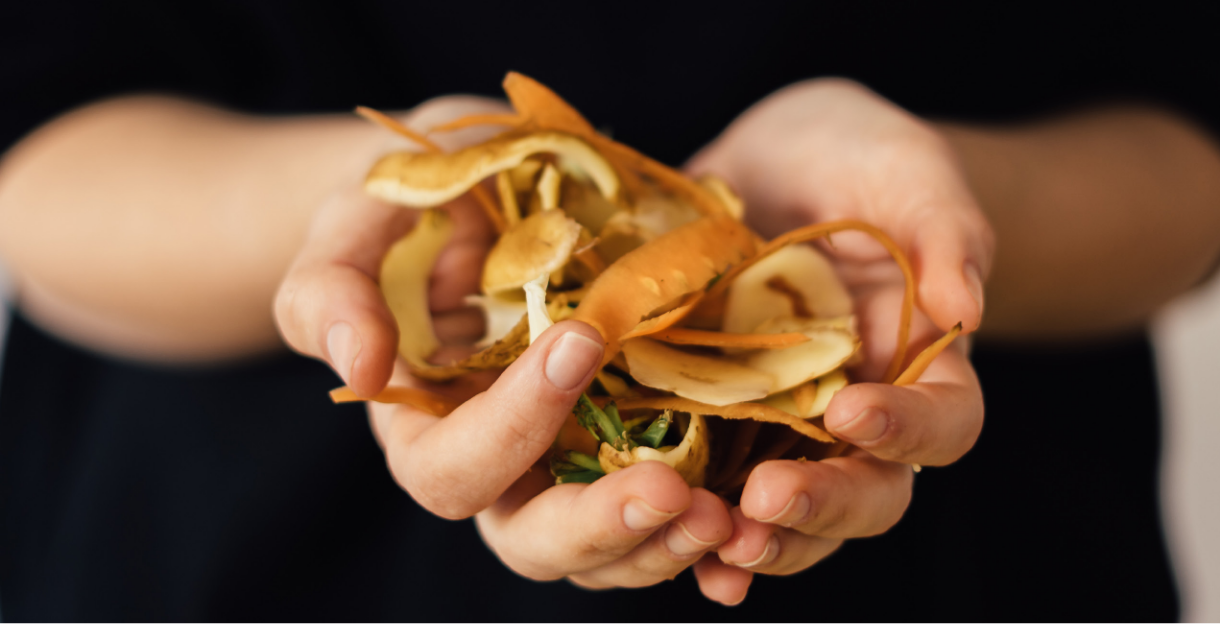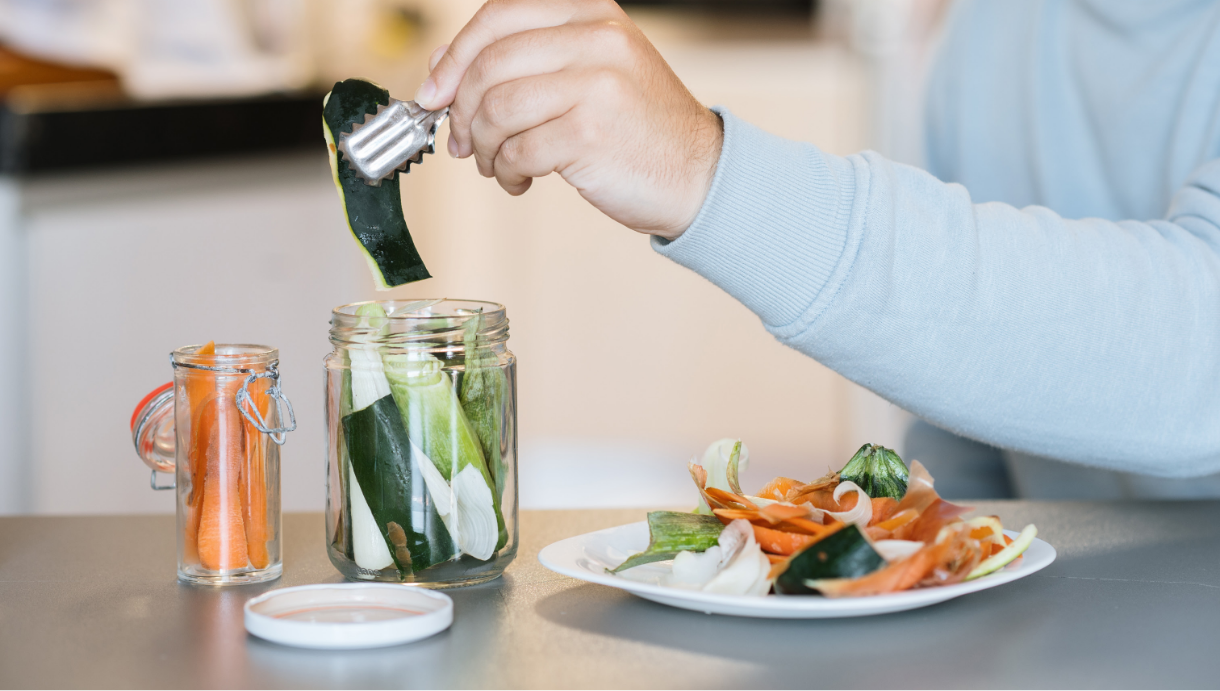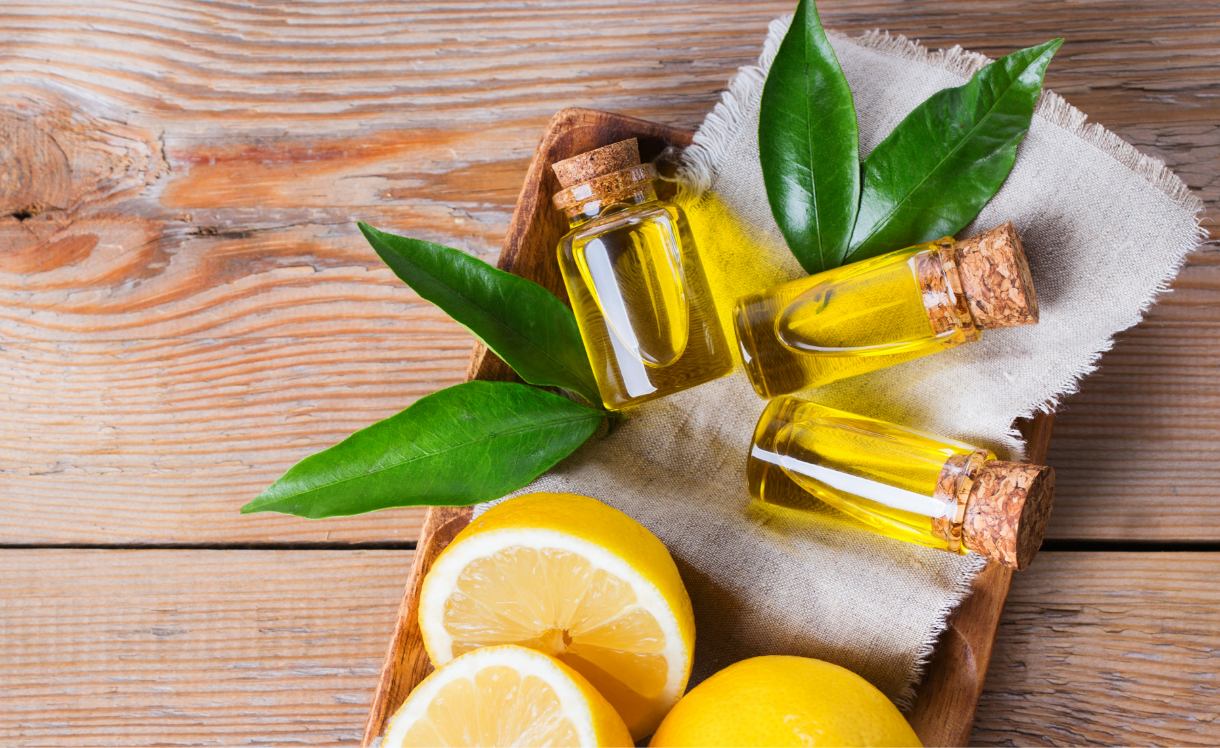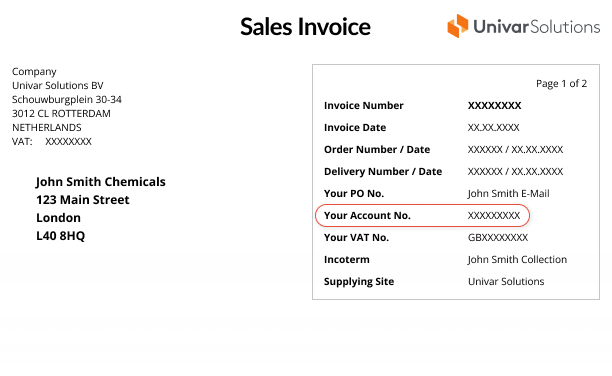We’re here to provide you with more information or help answer any questions you might have. Send us a note and we’ll get back to you as soon as possible.


Upcycled beauty is a growing category amid calls for sustainable philosophies, actions and product launches. Today's consumers are urging beauty brands to make more significant moves to reduce their environmental impact. Consumers consider producing sustainable products and reducing waste in manufacturing their top two sustainable value, Deloitte's 2022 sustainability survey reveals.
Approximately 30% of all food is lost or wasted every year, shares the United Nations Environment Program ThinkEatSave. Transforming the waste stream, reducing the number of ingredients labelled ‘waste’ and eliminating competition for existing food resources are high on the agenda to prevent food shortages and environmental damage. Finding other raw material sources is a sustainable solution to the world’s food and ecological problems.
Consumers care about people and the planet. They are conscious of the impact unused potential beauty ingredients cause. Research and storytelling around upcycled ingredients and circular product concepts are growing to meet demands for brands and products that reflect this rising consciousness.




What is upcycling?
The upcycling movement seen in beauty first emerged in the food industry. The Upcycled Food Association brought together a panel of experts to create an official definition for upcycled food in 2020.
They landed on the following definition: "Upcycled foods use ingredients that otherwise would not have gone to human consumption, are procured and produced using verifiable supply chains, and have a positive impact on the environment."
Upcycling beauty ingredients is the concept of taking waste and byproducts from processing and manufacturing, which were previously either discarded as waste or used as low-value materials and transforming them into new, more valuable products, materials or systems.
Efforts to reduce food waste and create a circular production process have changed how we select ingredients and manufacture beauty products. Brands embrace the repurposing of byproducts into new materials or products for the skin, hair and body that provide better quality or create better environmental value.
Benefits of Upcycling in Beauty
The circular economy is far more than waste not, want not. Whether you're looking to upcycle oil, fruits, seeds or extracts, the circular process of using existing items deemed 'waste' and turning them into valuable beauty ingredients has many advantages.
Here's a selection of the benefits of upcycling ingredients in beauty:
Is a way to reuse food waste
Upcycling ingredients instead of sourcing new ones leaves more food crops for food and is a conscious response to global hunger levels and the food supply crisis. Zero waste is a big part of today's sustainability missions. Food is often thrown away simply because of its appearance — a barrier beauty doesn’t face as the produce is turned into topical skincare, haircare, cleansing and body care formulations.
Contributes to conscious beauty
The push towards sustainable and conscious beauty sees brands turning to circular business models that minimize waste and manage resources carefully. Upcycling beauty ingredients demonstrates this consciousness. From an environmental, social and governance perspective, consumers want authenticity and transparency, seeking beauty brands that give back more than they take.
Combines nature, science and technology
Consumers seek familiar ingredients proven to provide effective results. By combining renewable, plant-based components and scientific processes, upcycled beauty formulations are a smart selection to enhance the overall health and appearance of the skin, hair and body.
Reduces environmental impact
Using upcycled ingredients lowers the natural resources required to grow plants, such as land and water, and uses leftover materials to produce new finished products. Using production processes such as green chemistry and renewable energy further reduces brands and formulators’ environmental footprint.
Creates unique formulations
Taking inspiration from literally anywhere, brands using existing ingredients and upcycling them in new and novel ways can develop stand-out products. Applying creativity and science to beauty formulations helps make your brand, ethos and product range unique.
How do brands upcycle ingredients?
Brands take upcycling inspiration from various sources, including food and drink processing, floristry and wood industries. Creativity, experimentation and innovation are at the core of upcycling development, spurring exciting ingredient options.
Adapting the raw material stream is a crucial challenge when upcycling beauty products, as selected materials must be fresh and in good condition to apply the processes required for beauty formulations.
An ingredient cannot be upcycled if it has been inherently altered by operations in the initial stages of production, such as high pressure, overheating or chemical degradation, as reported by one cosmetic chemist here. Ingredients must also be free from germs or possible contamination from other materials.
What certifications exist?
The Upcycled Certified Program is the world's first third-party certification program for upcycled ingredients and products. Developed by the Upcycled Food Association, the mark highlights upcycled ingredients and products procured and produced with surplus food or food by products from manufacturing that use verifiable supply chains and positively impact the environment.
They define the three categories as:
- Upcycled Ingredient (≥95% upcycled uniform diverted inputs by weight)
- Product Containing Upcycled Ingredients (≥10% certified upcycled ingredients by weight or threshold met for total tonnage diverted)
- Products with Minimal Upcycled Ingredient Content (<10% certified upcycled ingredients)
Partnerships between companies form to enhance awareness of food and biodegradable waste as an ethical source of ingredients and to promote zero waste. The approach connects to the clean beauty and greener beauty concepts that consumers want.


1. Olive Oil
Olive oil is made by pressing olives and then extracting their oil. Olive oil makes up only 20% of an olive's weight and the other 80% is discarded during production, The Fermentation Association reports.
The renewable raw material is sought after for its rich vitamin content of vitamins A, D, E and K as well as its antioxidant properties. Skincare producers also choose olive oil for its ability to help moisturize and hydrate the skin and fight off bacteria.
Rich in emollients, olive oil is popular among haircare brands to help soften and strengthen hair, preserving its moisture. Due to its conditioning properties, manufacturers opt for olive oil in formulations to target thick hair, processed hair and split ends.
3. Coffee
When coffee oil is extracted from coffee grounds, it provides multiple benefits to brands and formulators as the ingredient is known for its moisturization, antioxidant and anti-inflammation properties.
In brewed coffee beans, fewer than 1% of their beneficial compounds, which include lipids, tocopherols and polyphenols is extracted, leaving the remainder for waste, shared cosmetic chemist Kelly Dobos in an interview with New Beauty.
5. Dried Fruit Seeds
Dried fruit seeds are typically discarded from fruit juice and jam production. Brands are upcycling and utilizing them in extracts, essential oils and other beauty ingredients to benefit from their micronutrients and antioxidant quality.
Dried fruit is known for containing all the benefits of its fresh counterpart but using far less space. The ingredient is rich in fiber, vitamins and minerals, containing up to 3.5 times more of these components than fresh fruit.
In 2021, Forbes reported that The Ugly Company, which upcycled imperfect fruit into dried fruit snacks, stopped almost 142,866 pounds of the fruit from entering landfills in 2020.
2. Citrus Extracts
A citrus extract is a concentrated oil from a citrus fruit that is commonly obtained from peels. The citrus class of fruits, which extends to oranges, lemons, limes and grapefruits, is known for its high vitamin and mineral content, including vitamins B C and E, potassium and folic acid as well as essential oils.
Citrus extracts are rich in plant compounds and known for their antiinflammatory and antioxidant characteristics. Industry manufacturers also value citrus seed oil for its antimicrobial and anti-fungal properties, with the ingredient often found in medicinal soaps.
In 2022, recent research has further endorsed the value of citrus waste, including seeds, peels and pomace, in the cosmetics and perfumery space, highlighting its nutrients, bioactive compounds and phytochemicals.
4. Coconut
Coconut oil is most commonly made by extracting oil from either raw coconuts or dried coconut kernels. It’s recognized for its highly saturated and high fatty acid content as well as its antimicrobial and anti-inflammation properties. Coconut oil is popular in dry skin formulations as it’s known to hydrate and moisturize.
Haircare products often feature coconut oil as its high absorption properties travel into the hair shaft, help to reduce protein loss and create a healthy appearance.


Who are Some of the Leading Brands Upcycling in Beauty?
1. BYBI
Vegan, cruelty-free and eco-friendly skincare brand BYBI has formulated 50% of its skin, lip and suncare line with upcycled ingredients.
BYBI's blueberry and strawberry serums are made from 100% upcycled ingredients, its night cream has over 70% upcycled ingredients and its day moisturizer contains over 50% upcycled ingredients. BYBI’s resurfacing face mask features upcycled pumpkin enzyme.
Tapping into the food waste stream and sourcing nutrient-dense and effective plant-based ingredients, the brand strives to rescue greenhouse gas emissions, save on the amount of discarded food waste and reduce its overall carbon footprint. The brand has produced an auditing system to quantify its products based on factors including upcycling, renewability, how far it has traveled and ethical sourcing.
3. Cocokind
Botanical-forward skincare name, Cocokind, seeks to develop formulas that deliver their intended functions and provide hydration and skin barrier support.
Upcycling features in the brand's scrubbing clay, which is designed to smooth and brighten the skin while removing dead skin cells. Using repurposed coffee grounds sourced in California to exfoliate, the ingredient is paired with prebiotic chicory root to help feed the skin biome and red clay to cleanse the skin and prevent clogged pores. Cocokind sources and upcycles beans from a coffee shop that are destined for "waste" and uses them to formulate its scrubbing clay.
5. UpCircle
The UK-based ethical skincare brand began by upcycling coffee grounds, promoting organic and zero waste.
UpCircle has since expanded to upcycle blueberry extract, date seeds, fruit waters, maple bark extract, fruit stone, chai spices, chamomile stem, argan shell powder, olive stone powder and kiwi fruit water. To date, UpCircle has turned 450 tonnes of materials into sustainable skincare by upcycling ingredients.
The brand created new product ranges in 2018, including soap bars from brewed chai tea spices and a face range made with upcycled powdered fruit stones. UpCircle uses 10-plus food and other botanical byproducts, upcycling these into a wide range of 40 product variations, comprising exfoliants, moisturizers, serums and masks.
2. Three Ships
The Canada-based natural skincare company sources parts of produce that would often contribute to food waste and repurpose components. Three Ships sought to embrace the circular economy and proceeded to analyze its products’ life cycle to reduce waste and favor renewable resources.
Three Ships formulates with an upcycled tree bark extract from leftover tree bark from the Canadian lumber industry, which goes through an extraction, filtration and purification process. The brand chose the particular extract, known to be high in polyphenols, as it can help with skin elasticity and hydration and calm irritation indicators such as redness.
As they strive to reduce waste by finding methods to upcycle ingredients, the brand's upcycled ingredient collection also includes a grape cell extract, squalane, biolin and pentylene glycol.
4. Kadalys
The French Caribbean cosmetics products manufacturer repurposes banana peels and pulp to produce extracts. Kadalys sources and extracts actives from bananas and uses their phytosterols, polyphenols, vitamin E, omega-6s and 9s in skincare ingredients to promote positive skin health.
Using banana bioactive, Kadalys strives to solve the fruit's food waste problem. Every year, around 22 million tonnes of bananas are discarded by consumers and suppliers because they are "ugly" or misshapen, the brand shares. Losses amount to roughly 40% in developing countries.
The agricultural-waste banana fruit is turned into certified organic and patented active beauty ingredients for products including facial creams, toners, cleansers, facial masks, hair oils and body oils.
6. Superzero
As part of its product collection, Superzero has repurposed 100% sustainably harvested upcycled charcoal using oak offcuts from the fencing industry and converted them into personal care end-products.
The zero waste hair care line selects and sources oak and turns it into charcoal, with small charcoal pieces unsuitable for cooking broken up into its component particles. These particles are then sieved to offer skin-friendly benefits, namely skin exfoliation and detoxification.
Superzero has also launched a solid product format, its hydration and blue light defense hand balm bar. Its vegetable-based formulation features upcycled ingredients like blueberry oil, offering moisturization to the skin and hands.


Tips for Formulating with Upcycled Beauty Ingredients
- Know the inherent value of the upcycled ingredients you are working with.
- Experiment with possible applications of your chosen upcycled ingredient to find the best formula options.
- Practice the production process.
- Ensure you have sufficient quantities of the required materials to meet consumer expectations and demand.
- Understand your selected ingredients' characteristics, effectiveness and multiple functions.
- Consider ingredient sourcing and effectiveness, carbon emissions and other sustainable commitments.
- Tie into other key eco-conscious trends, including waterless beauty and DIY beauty.
Formulate Products With Upcycled Beauty Ingredients
Upcycled Beauty Product Success Stories
With consumers paying more attention to the environmental impact of their products and how they are sourced and created, interest in sustainability continues to grow. To meet this demand, natural formulations feature sustainable, plant-based and organic or fair-trade raw materials. Upcycled beauty ingredients take this approach to the next level.
Here, we take a look at some of the innovative and exciting formulators that Univar is helping to bring upcycled ingredients, materials and finished products to the beauty and personal care market.


1. Colonial Chemical
Manufacturer Colonial Chemical upcycles waste glycerine from biodiesel production to develop its complete Suga® product range. The waste glycerine used would usually go into animal feed or be discarded.
Colonial Chemical also offers Cola®Lipid GS, a multifunctional, natural triglyceride organic phospholipid complex. It is produced using a by-product of winemaking: grapeseed oil. The oil is extracted from seeds left over from the wine and juice industries. The seeds, once separated from the skins and stems, are cold-pressed to provide the oil for the beauty sector. The remaining cake is then pressed into natural logs to be used as exfoliants in skin products or as animal feed for farmers in the local area.
3. Dow
Dow has launched two upcycled materials in 2022. EcoSmooth™ Rice Husk Cosmetic Powder, with a natural origin content of one according to ISO 16128, comes from rice husk, a natural source that does not compete with the food industry. It provides optical and sensorial benefits, water and sebum absorption and oil thickening. EcoSmooth™ Universal Fluid 1100, with a naturality index of about 0.7, is made with feedstocks left from fields of sugar cane or wheat harvests. Partly volatile, it imparts good spreadability and creates a soft skin feel.
2. EarthOil
EarthOil’s products also feature organic grapeseed oil that has been extracted from seeds left over from the wine and juice industries. EarthOil also represents Down Under Enterprises and their range of native Australian hydrosols: Lemon Myrtle, Sandalwood, Lavender, Tea Tree and Fragonia®.
Hydrosols are naturally produced during the steam distillation of essential oils. They are considered a by-product of the process and would otherwise be waste material. As saturated solutions of the plant’s water-soluble components, they exhibit the same olfactory character as the oils, yet in a milder format, and deliver delicately fragranced ingredients.
4. Poth Hille
Poth Hille offers Natural Vegan Beeswax Substitute PHC 9677, a blend of natural wax components. Each wax adds value to existing supply chains by utilizing material that would otherwise go to waste. Rice is the world’s most common crop, but a large part of the plant is typically discarded. Rice bran wax is obtained from refining crude wax, which is produced from the upstream refining process applied to rice bran oil. Sunflower seed oil is one of the most important vegetable oils in the world in terms of volume. Unrefined oil contains approximately 0.3% of wax that would normally be disposed of, but here it gives rise to sunflower wax. Sumax wax is a by-product of lacquer.


At Univar Solutions, we offer a wide variety of ingredients for the beauty and personal care market that are ideal for upcycling beauty concepts and developing conscious formulations.
Contact Us for Formulation Support
Upcycled ingredients are a popular beauty area as the industry looks for ways to become more sustainable.
Learn more about upcycled beauty formulations and order samples today to create your upcycled beauty products.
3. Sulfates
Sulfates are the ingredients that create lather in everything from face wash to shampoo and are commonly listed as ammonium lauryl sulfate and sodium lauryl sulfate. Many traditional formulas use sulfates to effectively remove dirt and excess sebum, but they’ve been known to strip the skin of moisture and cause irritation. If you are formulating for sensitive skin, steer clear of foaming formulas and instead opt for oil or cream cleansers, which are made with milder eco surfactants that don’t strip the skin of its natural oils.
4. Chemical Sunscreens
There are two main types of sunscreen: chemical and mineral (also known as
physical). Chemical sunscreens use ingredients like avobenzone, octinoxate, and oxybenzone to reflect UV rays off of the skin. They’re effective at getting the job done but are known irritants to those with sensitive skin. Mineral sunscreens on the other hand use ingredients like zinc oxide and titanium dioxide which sit on the skin’s surface and physically prevent UV rays from penetrating the skin. They are much gentler on the skin and are generally recommended for use on sensitive skin and children’s skin.
5. Retinol
Although retinol is a holy grail ingredient for anti-aging routines, it’s notoriously harsh on the skin. If you are working with sensitive skin, you’ll want to swap it out for bakuchiol. Bakuchiol is a natural alternative for retinol.


Resources
References:
Aquabio, Car Wash History: From Simple Beginnings to Modern Day Features: https://aquabio.co/uncategorized/blog/car-wash-history-from-simple-beginnings-to-modern-day-features/
Automatic Vehicle Wash, Tunnel Systems: https://avwequipment.com/equipment-category/tunnel-systems/
Carwash.com, 5 long-lasting benefits of carwashing: https://www.carwash.com/5-long-lasting-benefits-carwashing/
Carwash.com, Going green: Save electricity, water and money: https://www.carwash.com/going-green-save-electricity-water-and-money/
Carwash.com, Lessons in carwash tunnel layout: https://www.carwash.com/lessons-carwash-tunnel-layout/
Detail Pro POS, 20 Car Wash Statistics in 2021 That Will Surprise You: https://www.detailpropos.com/blog/car-wash-statistics/
Focusedcarwash.com, Car Wash Industry Statistics: https://focusedcarwash.com/wp-content/uploads/2017/09/industry-statistics.pdf
How It Works, How does a car wash work?: https://www.howitworksdaily.com/how-does-a-car-wash-work/
JBS Industries, 10 Trends You Should Know About the Car Wash Industry: https://www.jbsindustries.com/blog/10-trends-you-should-know-about-in-the-car-wash-industry/
JBS Industries, Best Car Wash Add-Ons: https://www.jbsindustries.com/blog/car-wash-add-ons/
PSD Codax, Tunnel Car Wash Systems - A Beginner's Guide to Tunnel Car Wash Systems: https://www.psdcodax.com/tunnel-car-wash-systems-a-beginners-guide-to-tunnel-car-wash-systems/
Sunset North Car Wash, Here's What (Tunnel) Car Washes Are Really Doing to Your Car: https://sunsetnorthcarwash.com/2022/11/28/heres-what-tunnel-car-washes-are-really-doing-to-your-car/
Synchrony, 5 Reasons to Visit the Car Wash - and What to Watch Out For: https://www.mysynchrony.com/blog/automotive/5-reasons-to-visit-the-car-washand-what-to-watch-out-for.html
Thompson Sales Company, Wash Your Car Yourself or Take It Somewhere: https://www.thompsonsales.com/wash-your-car-yourself-or-take-it-somewhere/
Tommy's Express, Do clean cars improve gas mileage?: https://tommys-express.com/blog/do-clean-cars-improve-gas-mileage/
Way.com, Tunnel Car Wash - All you need to know: https://www.way.com/blog/tunnel-car-wash-all-you-need-to-know/
Way.com, All you need to know about clean cars and fuel efficiency: https://www.way.com/blog/clean-car-and-fuel-efficiency/
Western Carwash Association, Water Conservation: https://www.wcwa.org/page/WaterConservation




